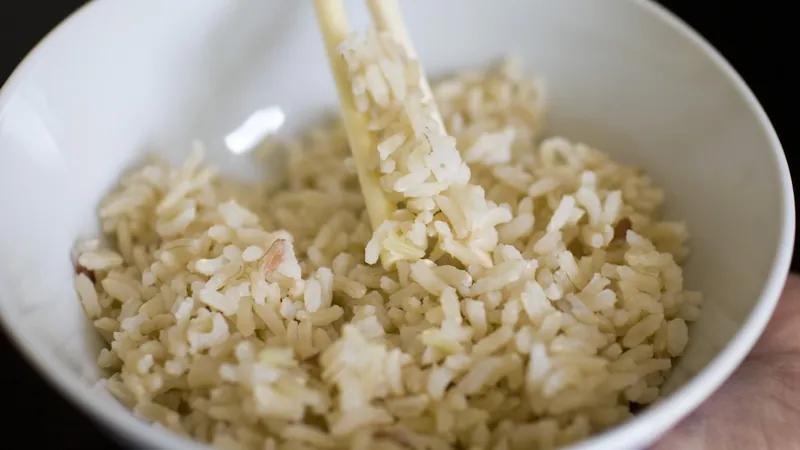
Unlock the Secret to Gut Health: The Power of Resistant Starch!
2024-09-16
What is Resistant Starch?
Resistant starch is a type of carbohydrate that isn’t fully digested in the small intestine. Instead, it passes into the large intestine, where it gets fermented, nourishing your gut's beneficial bacteria—those vital little warriors that support everything from digestion to immunity. Foods rich in resistant starch include green bananas, raw potatoes, oats, certain nuts and seeds, beans, and legumes.
The Health Benefits Are Compelling
Recent studies highlight the multifaceted health benefits of consuming resistant starch. For example, research published in Nature Metabolism revealed that participants who consumed resistant starch for eight weeks experienced noticeable weight loss, improved insulin sensitivity, and enhanced gut microbiome health. This suggests that resistant starch not only helps regulate blood sugar but may also lower systemic inflammation and reduce fat absorption.
Moreover, resistant starch has been linked to better blood sugar control and a decreased risk of certain types of cancer, along with an overall reduction in mortality rates. It’s also on the radar as a potential dietary therapy for slowing down the progression of diabetic kidney disease.
Despite these incredible benefits, most Americans are severely lacking in resistant starch intake—averaging only four to five grams per day when the recommended intake for optimal health is a minimum of 15 grams. “The widespread consumption of processed foods is a major barrier to getting enough resistant starch,” says Mindy A. Patterson, an associate professor at Texas Woman’s University.
How Resistant Starch Works Its Magic
Unlike regular starches that are quickly broken down into glucose in the small intestine, resistant starch reaches the colon where it serves as a prebiotic, feeding the healthy gut bacteria. This fermentation process produces short-chain fatty acids (SCFAs) like butyrate, which have a myriad of health benefits including improved blood sugar regulation and enhanced immune function.
These SCFAs work wonders by inhibiting harmful inflammation and promoting fat breakdown. Additionally, resistant starches contain fewer calories per gram than traditional starches, making them an effective tool for those aiming to shed pounds.
Diverse Types of Resistant Starch
There are five distinct types of resistant starches, each found in different foods: 1. Type 1: Present in whole grains, seeds, and legumes. 2. Type 2: Found in unripe bananas and raw potatoes. 3. Type 3: Created when cooked starchy foods (like rice and pasta) are cooled, increasing their resistant starch content. 4. Type 4: A chemically modified starch commonly found in processed foods. 5. Type 5: Combining starch and fatty compounds, this new type is still being researched for its effects.
Interestingly, a study showed that cooked and cooled rice had over two and a half times more resistant starch compared to freshly cooked rice, making leftovers a beneficial addition to your diet!
Incorporating Resistant Starch into Your Diet
While dietary supplements for resistant starch are becoming popular, experts suggest focusing on food sources first. “If you’re struggling to meet your resistant starch needs, supplements may help, but they should not replace a whole-foods approach,” Patterson advises.
If you're eager to boost your intake of resistant starch, it's recommended to do so gradually to avoid digestive discomfort like gas or bloating. Simple changes like making a potato or pasta salad can effectively increase your resistant starch consumption.
Ultimately, resistant starch may just be the key to dispelling the negative notions surrounding carbohydrates. As nutritionist Bazilian puts it, “Keeping your gut healthy makes everything else function better.
So, why not embrace the power of resistant starch and unlock the secret to improved gut health today? Your body will thank you!

 Brasil (PT)
Brasil (PT)
 Canada (EN)
Canada (EN)
 Chile (ES)
Chile (ES)
 España (ES)
España (ES)
 France (FR)
France (FR)
 Hong Kong (EN)
Hong Kong (EN)
 Italia (IT)
Italia (IT)
 日本 (JA)
日本 (JA)
 Magyarország (HU)
Magyarország (HU)
 Norge (NO)
Norge (NO)
 Polska (PL)
Polska (PL)
 Schweiz (DE)
Schweiz (DE)
 Singapore (EN)
Singapore (EN)
 Sverige (SV)
Sverige (SV)
 Suomi (FI)
Suomi (FI)
 Türkiye (TR)
Türkiye (TR)